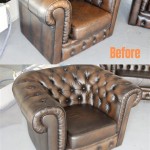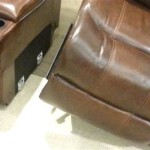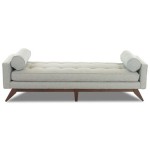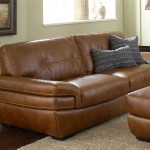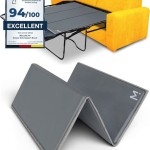Understanding the Width of Sofa Beds: A Comprehensive Guide
Sofa beds offer a versatile solution for maximizing space and providing temporary sleeping accommodations. A critical factor in selecting a sofa bed is its width, which directly impacts both its seating capacity and its suitability for a specific room. This article provides a thorough analysis of sofa bed widths, exploring the different types available, the factors influencing width, considerations for space optimization, and the practical implications of choosing the right size.
Types of Sofa Beds and Their Corresponding Widths
Sofa beds come in a variety of configurations, each characterized by a distinct mechanism for converting from a sofa to a bed. These mechanisms directly influence the overall width of the furniture piece. Common types include traditional pull-out sofa beds, futon sofa beds, click-clack sofa beds, and corner sofa beds with integrated pull-out or pop-up beds.
Pull-Out Sofa Beds: These represent the classic sofa bed design. A mattress, typically folded in three sections, is stored within the sofa frame and pulled out horizontally to create a sleeping surface. The width of a pull-out sofa bed is usually dictated by the mattress size offered. A standard twin-size pull-out sofa bed might have an overall width between 65 and 75 inches. A full-size pull-out sofa bed could range from 75 to 85 inches, while a queen-size option typically falls between 85 and 95 inches. King-size pull-out sofa beds are less common but can reach widths of 95 inches and beyond. These measurements are approximate and can vary slightly depending on the specific manufacturer and design.
Futon Sofa Beds: Futons differ from traditional pull-out sofa beds in that the entire seating surface unfolds to create a flat sleeping area. Futons generally have a simpler construction, often consisting of a frame and a thick mattress pad. The width of a futon sofa bed is largely determined by the width of the mattress when laid flat. A twin-size futon may measure roughly 39 inches in width, while a full-size futon could be approximately 54 inches wide. Queen-size futons generally have a width of around 60 inches. The overall width of the futon frame may be slightly larger than the mattress width due to the inclusion of armrests or side panels.
Click-Clack Sofa Beds: Also known as convertible sofa beds, these models typically feature a hinged backrest that can be easily lowered to create a flat sleeping surface. The mechanism is often referred to as "click-clack" due to the sound it makes when transitioning between the sofa and bed positions. The width of a click-clack sofa bed is closely related to the width of its seating area. A click-clack sofa bed designed for two people might have a width of approximately 70 to 80 inches, while larger models can reach widths of 85 inches or more. The actual sleeping surface width will be slightly less than the overall width of the sofa due to the frame’s supporting structure.
Corner Sofa Beds: Corner sofa beds, or sectionals with a pull-out bed, present a more complex width consideration. These typically consist of multiple modular sections that can be arranged in various configurations. The width of a corner sofa bed is highly dependent on the number of sections and their individual dimensions. A corner sofa bed with a built-in pull-out bed could have a total width ranging from 85 inches to well over 120 inches, depending on the specific design and the inclusion of features such as chaise lounges or additional seating modules. The width of the pull-out mattress itself would generally correspond to a standard twin, full, or queen size.
Factors Influencing Sofa Bed Width
Beyond the specific type of sofa bed, several other factors contribute to the overall width. Understanding these influencing factors allows for a more informed decision when choosing a sofa bed.
Armrest Design: The style and width of the armrests significantly impact the overall width of the sofa bed. Wide, padded armrests can add several inches to each side of the sofa, increasing the overall width substantially. Conversely, minimalist or low-profile armrests contribute less to the total width. Some sofa beds feature armrests that can be removed or folded down, offering greater flexibility and potentially reducing the overall width when needed.
Frame Construction: The structural design of the sofa bed frame influences its width. Frames constructed from solid wood tend to be more robust and may require thicker side supports, resulting in a wider overall dimension. Metal frames, on the other hand, can be designed with thinner profiles, potentially reducing the overall width. The internal mechanism for the pull-out bed also affects the frame dimensions. More complex mechanisms may require more space within the frame, leading to a wider sofa.
Mattress Size: As previously mentioned, the mattress size directly dictates the minimum width required for the sofa bed. Manufacturers typically design the sofa frame to accommodate a standard mattress size, such as twin, full, queen, or king. However, slight variations in mattress dimensions can occur, which may affect the overall width of the sofa bed. It is important to verify the exact mattress dimensions and compare them to the overall sofa width to ensure a proper fit and comfortable sleeping experience.
Design Aesthetics: Design choices related to aesthetics, such as the inclusion of decorative elements or the overall shape of the sofa, can influence the width. Curved designs or sofas with flared arms may require a wider overall footprint compared to more streamlined, rectangular designs. Similarly, sofas with elaborate detailing or protruding elements may also contribute to increased width.
Space Optimization and Width Considerations
Choosing the right sofa bed width is crucial for optimizing space within a room. A sofa bed that is too wide can overwhelm the area, making it feel cramped and uncomfortable. Conversely, a sofa bed that is too narrow may not provide adequate seating or sleeping space. Consider the following factors when determining the appropriate width.
Room Dimensions: Accurately measuring the available space is the first step in determining the ideal sofa bed width. Account for doorways, walkways, and other furniture pieces that may obstruct the space. Consider the overall layout of the room and how the sofa bed will be positioned within the space. It is advisable to leave ample clearance around the sofa bed to allow for comfortable movement and prevent overcrowding.
Seating Requirements: Determine the number of people who will typically use the sofa for seating. A wider sofa bed can accommodate more people comfortably. Consider the style of seating desired, such as formal upright seating or more relaxed lounging. The depth of the sofa, in addition to its width, also plays a role in seating comfort. A deeper sofa allows for more relaxed seating, while a shallower sofa provides a more upright posture.
Sleeping Needs: Assess how frequently the sofa bed will be used for sleeping and the number of people who will need to be accommodated. A queen-size or king-size sofa bed provides ample sleeping space for couples or individuals who prefer more room to stretch out. A twin-size or full-size sofa bed may be sufficient for single sleepers or occasional guests. Consider the comfort level of the mattress and the ease of converting the sofa into a bed.
Multi-Functional Spaces: In multi-functional spaces, such as home offices or spare rooms, the sofa bed serves dual purposes. In these situations, it is particularly important to choose a sofa bed that is appropriately sized for both seating and sleeping without compromising the functionality of the room. Consider a sofa bed with a compact design or a mechanism that allows for easy conversion between sofa and bed positions. Modular sofa beds offer flexibility in arranging the furniture to suit different needs.
Accessibility: Ensure that the chosen sofa bed width allows for easy access to other areas of the room. Avoid placing the sofa bed in a location that blocks doorways or obstructs walkways. Consider the placement of electrical outlets and ensure that they are easily accessible even when the sofa bed is in use. Pay attention to the location of windows and doors and avoid placing the sofa bed in a position that may interfere with their operation.
Properly understanding sofa bed width and its relationship to room size, seating needs, and sleeping requirements ensures a functional and aesthetically pleasing addition to any living space. Careful planning and consideration of the influencing factors will lead to a successful and satisfactory purchase.

John Lewis Bailey Double Sofa Bed

Lex Sofa Bed Living Room Furniture Singapore Sg Bedandbasics

Jay Be Sofa Beds Modern Pocket Sprung Bed Hafren Furnishers

Stickon 90 5 In W Gray 3 Seat Velvet Queen Size Sofa Bed With Storage Hym Hd04280331 The Home Depot

Jaybe Retro Three Seater Sofa Bed Buy At Bestbeds

Seafuloy 55 In Width Gray Velvet Twin Sofa Bed With Adjustable Backrest And 2 Pillows W1193s00004 1 The Home Depot

Nill Boxton Fabric Sofa Cum Bed 3 Seater Light Brown Furniture

Jay Be Sofa Beds Retro Deep Sprung Bed 2 Seater Hafren Furnishers
Vimle Sleeper Sofa 2 Seater Dimensions Drawings Com

Jay Be Classic Modern Fabric Sofa Beds

